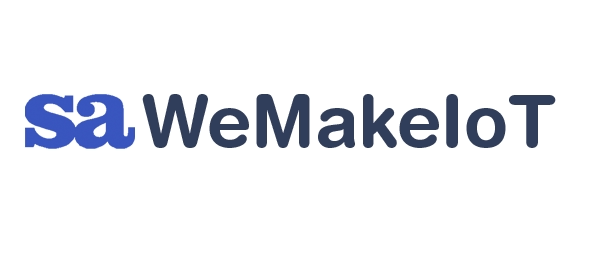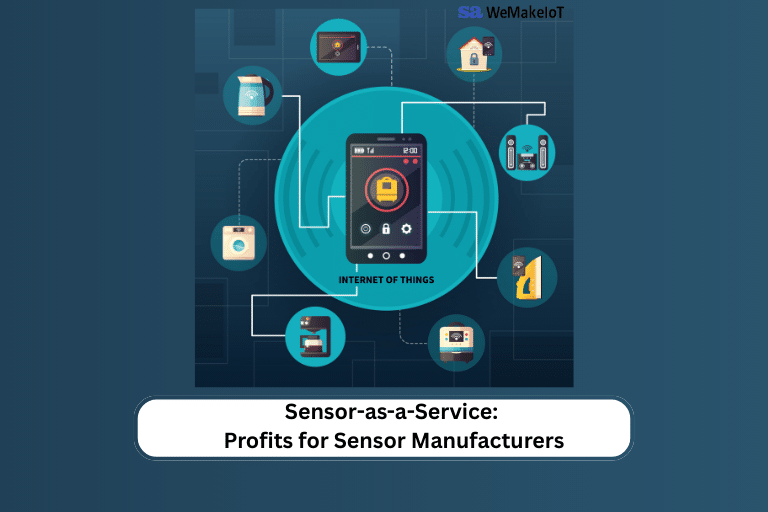Sensor-as-a-Service: Profits for Sensor Manufacturers
If you manufacture sensors, you already create the most valuable part of the IoT ecosystem, the data source. But selling hardware alone means a one-time transaction. By adopting the Sensor-as-a-Service (SenaaS) model, your sensors can deliver ongoing revenue, stronger customer loyalty, and a competitive edge.
With SenaaS, your customers no longer invest in large upfront hardware costs or complex infrastructure. Instead, they receive continuous access to sensor data, visualizations, and analytics through your IoT platform, paying based on subscription, usage, or results. For you, this means predictable income and deeper relationships with clients.
What Is the Sensor-as-a-Service Model?
SenaaS delivers sensor-generated data insights through a cloud-based IoT platform. The customer doesn’t worry about setup, maintenance, or analytics. The platform handles data collection, processing, and visualization, giving them real-time decision-making tools.
For sensor manufacturers, this is a chance to sell not just sensors, but an end-to-end solution — hardware plus data services. Customers stay connected to your platform for years, instead of buying once and disappearing.
Profitable Pricing Models for Sensor Manufacturers
1. Subscription-Based Pricing
A fixed monthly or annual fee gives customers continuous access to their sensor data. Example: A greenhouse automation system provides temperature, humidity, and soil moisture data for $20/month, including alerts and dashboard visualization. Manufacturer Benefit: Stable recurring income and long-term customer retention.
2. Pay-Per-Use Pricing
Customers pay only for the data they consume. Example: An energy monitoring solution charges $0.005 per data reading. Manufacturer Benefit: Appeals to seasonal or variable-use clients without overcharging them.
3. Tiered Pricing
Offer different service levels based on the number of sensors, data frequency, or advanced analytics.
Example:
- Basic: 1 sensor, daily data — $10/month
- Pro: Up to 5 sensors, hourly data — $30/month
- Enterprise: Custom pricing, analytics, priority support Manufacturer Benefit: Easy upselling as customers expand operations.
4. Outcome-Based Pricing
Charge customers a percentage of the savings or gains they achieve using your IoT-enabled sensors.
Example: A vibration monitoring system that reduces downtime charges 5% of maintenance savings.
Manufacturer Benefit: High customer trust and proof of value.
5. Freemium with Paid Add-ons
Offer basic data access for free, then charge for advanced features like historical data visualization, API integration, or predictive analytics. Manufacturer Benefit: Low entry barrier to attract leads, with room for upgrades.
strong>Key Considerations When Pricing SenaaS
- Hardware Cost Recovery: Spread sensor costs into long-term service pricing.
- Platform Costs: Factor in hosting, analytics tools, and customer support.
- Industry Value: Match pricing to the customer’s potential ROI.
- Scalability: Ensure the pricing model works for customers adding more IoT sensors or requiring richer data visualization.
Final Thoughts for Sensor Manufacturers
Selling sensors as a one-time product limits growth. The Sensor-as-a-Service model transforms your offering into a profitable IoT solution with ongoing data delivery, visualization, and insights. Start with a simple pricing model, gather feedback, and refine your offering to meet customer needs.
With the right IoT platform and a flexible pricing strategy, your sensors can do more than collect data — they can continuously generate value for both your customers and your business.
Ready to Turn Your Sensors into a Recurring Revenue Stream?
We help sensor manufacturers integrate their devices into a powerful IoT platform that offers data visualization, analytics, and automated insights — all under your brand. Whether you need subscription billing, pay-per-use integration, or advanced analytics, our solutions are built to scale.
Let’s transform your sensors into a long-term profit engine.
Contact us today to discuss your Sensor-as-a-Service strategy.




